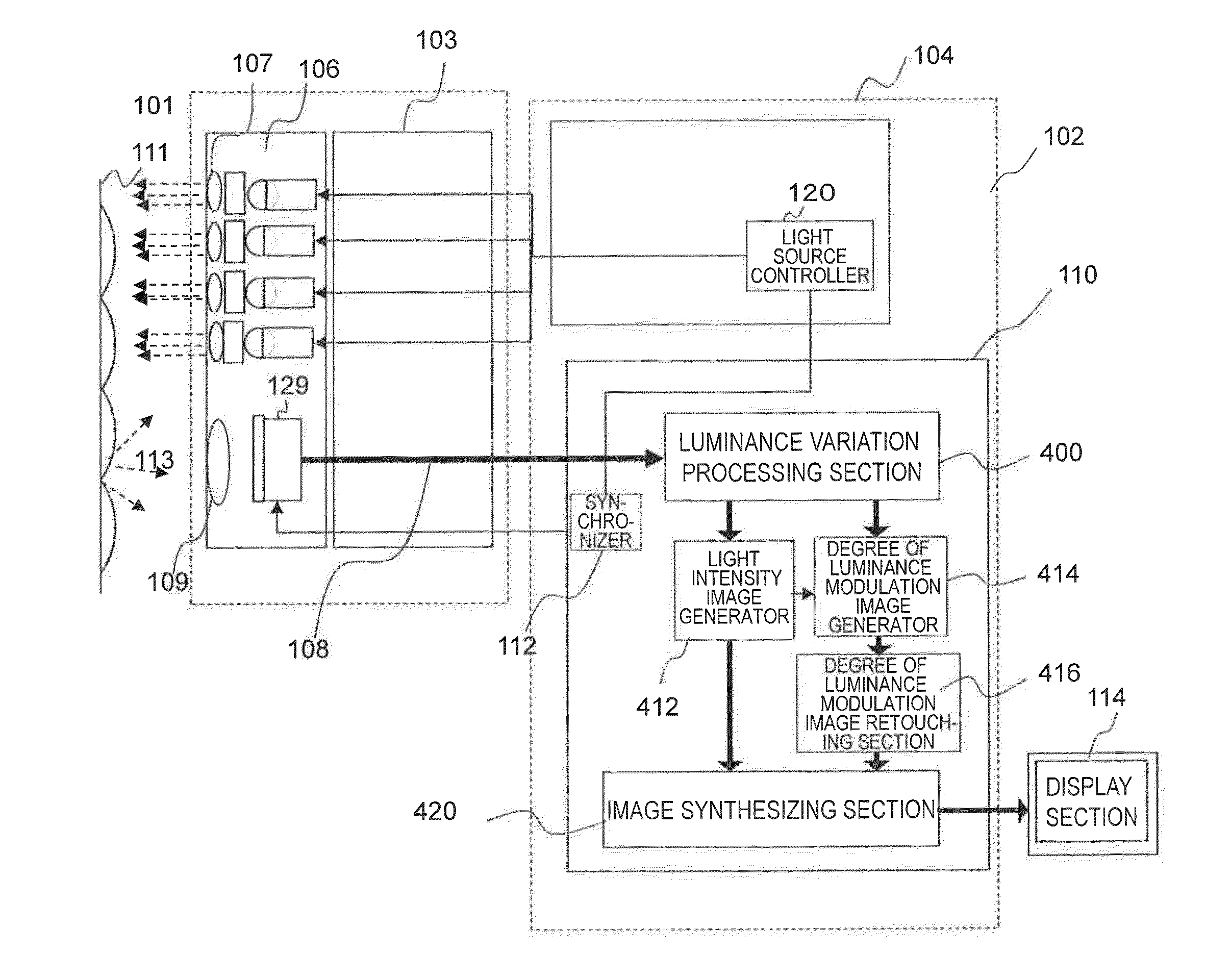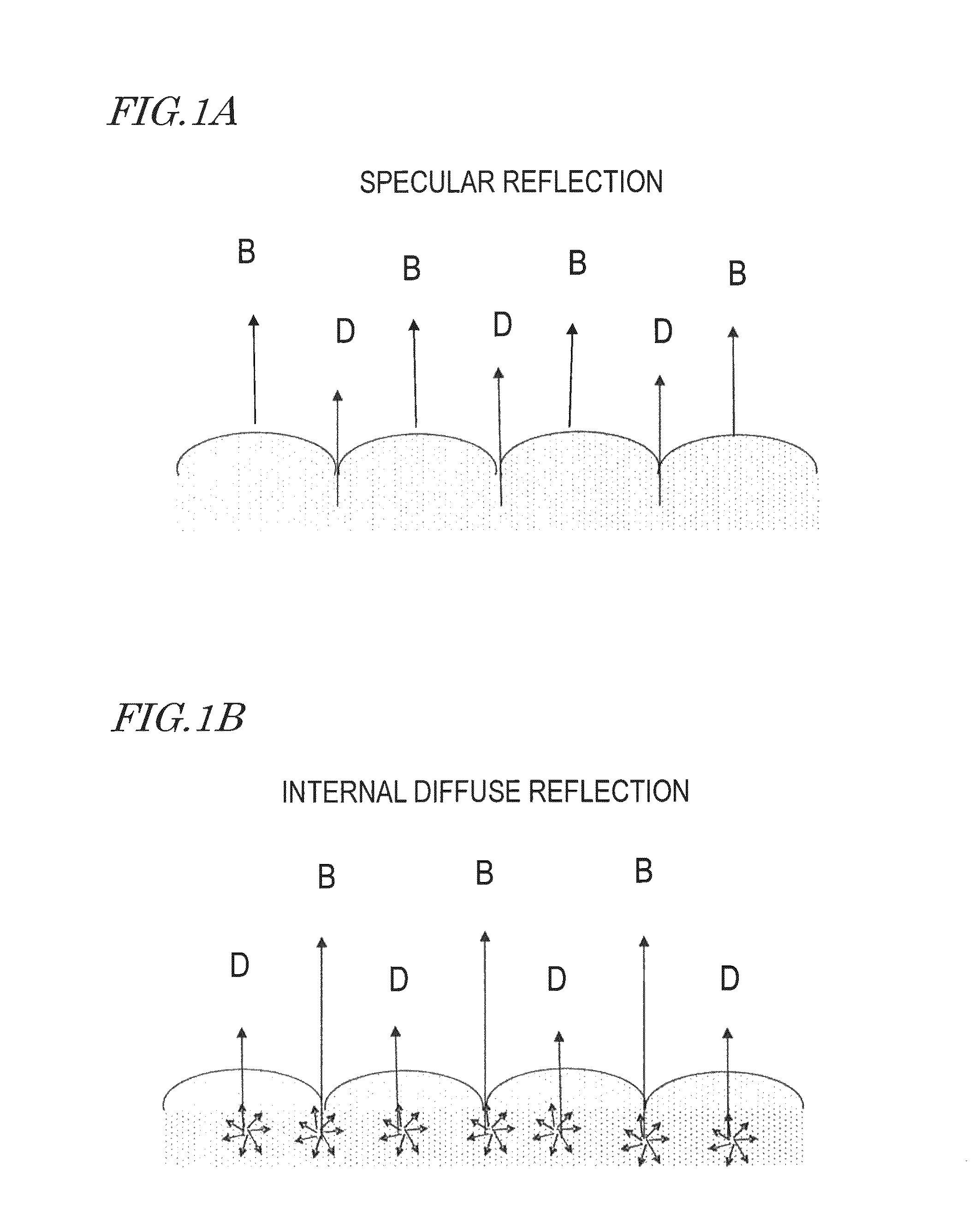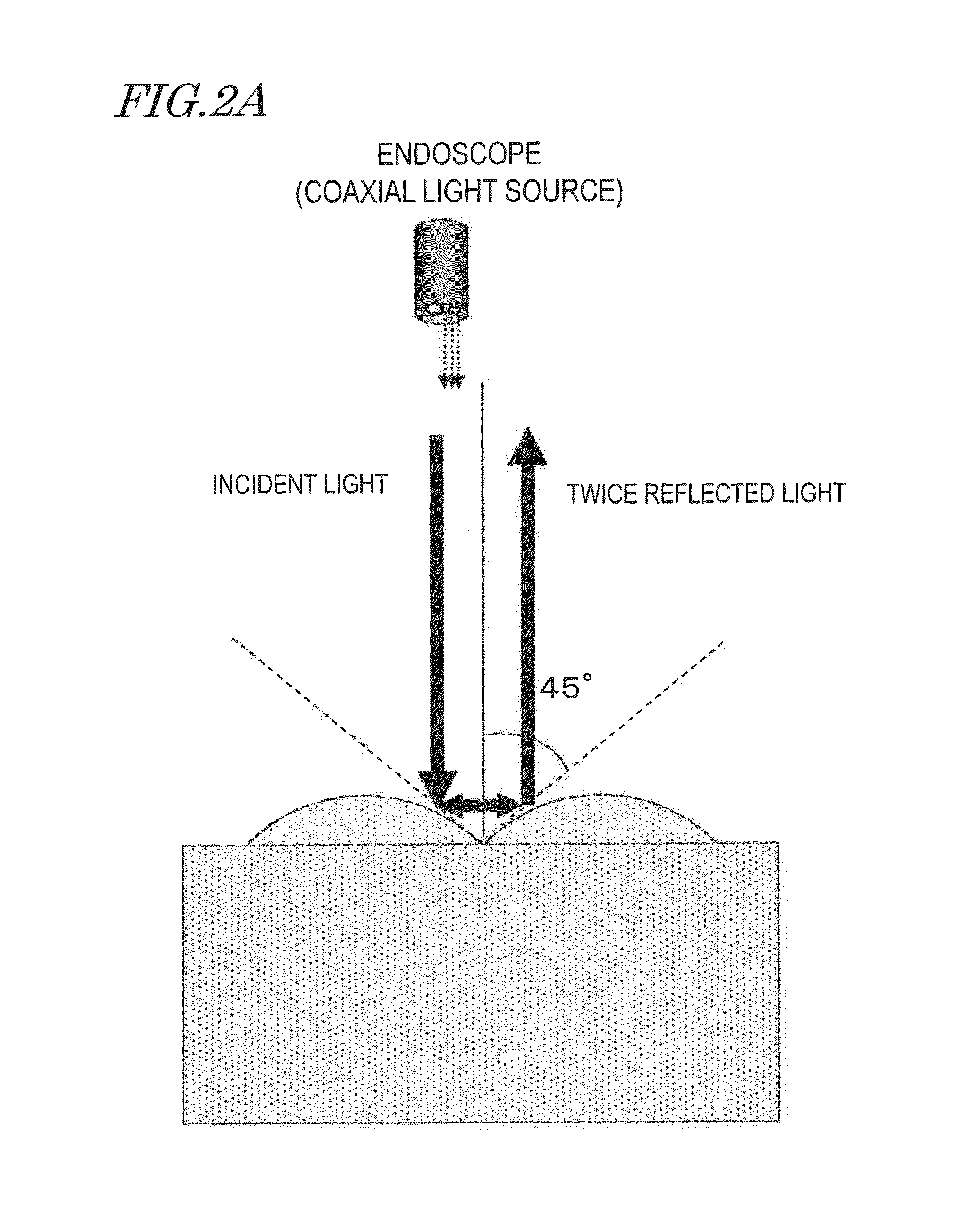Imaging device and endoscope for detecting and displaying the shape of the micro-geometric texture of a transparent structure
a transparent structure and micro-geometric technology, applied in the field of image capture processors, can solve the problems of difficult to capture such a micro-geometric surface texture of objects based on shades, difficult to sprinkle liquid onto the mucosa in the first place, and difficulty in capturing such a micro-geometric surface texture based on shades, etc., to achieve the effect of enhancing the degree of polarization of the polarization degree image and enhancing the degree of polarization degree imag
- Summary
- Abstract
- Description
- Claims
- Application Information
AI Technical Summary
Benefits of technology
Problems solved by technology
Method used
Image
Examples
embodiment 1
[0114]FIG. 5 schematically illustrates an overall configuration for an image capturing processor as a first embodiment of the present disclosure. This image capturing processor includes an endoscope 101, a controller 102 and a display section 114. The endoscope 101 includes a tip portion 106 with a monochrome broadband polarization image sensor 115 and an inserting portion 103 with a light guide 105 and a video signal line 108. The inserting portion 103 of the endoscope 101 has a structure that is elongated horizontally as shown in FIG. 5 and that can be bent flexibly. Even when bent, the light guide 105 can also propagate light.
[0115]The controller 102 includes a light source section 104 and an image processor 110. A lamp 108 such as a xenon lamp, a halogen lamp or an LED lamp is built in the light source section 104. The non-polarized white light emitted from the lamp 108 passes through a color wheel 116 with rotating RGB filters. As a result, red (R), green (G) and blue (B) frame...
embodiment 2
[0183]FIG. 21 schematically illustrates an overall configuration for an image capturing processor as a second embodiment of the present disclosure. In this second embodiment, a color image is captured by a single-chip color polarization image sensor 119 by irradiating the object with white light, which is a major difference from the first embodiment described above.
[0184]According to this embodiment, the non-polarized white light emitted from the light source section 104 is transmitted through the light guide 105 and irradiates the object with non-polarized white illuminating light 117. The light reflected from the object is observed by the color polarization image sensor 119. The rest of the processing is the same as what has already been described for the first embodiment, and description thereof will be omitted herein. Thus, the following description of the second embodiment will be focused on the configuration of the color polarization image sensor 119.
[0185]FIG. 22 illustrates ...
embodiment 3
[0198]FIG. 30 schematically illustrates an overall configuration for an image capturing processor as a third embodiment of the present disclosure.
[0199]According to this third embodiment, the object is irradiated with polarized light as illuminating light, and therefore, there is no need to use any polarization image sensor, which is a major difference from the first and second embodiments. Specifically, according to this embodiment, the object is irradiated with white light emitted from a polarization-rotating light source and a color image is captured using a single-panel color image sensor. An image is captured one by one by each of four polarized light sources, of which the polarization planes define mutually different angles. And by observing the variation in light intensity on a pixel-by-pixel basis, a pseudo-polarization image is captured.
[0200]Non-polarized white light beams emitted from four lamps 118 that are arranged in the light source section 104 are input sequentially ...
PUM
 Login to View More
Login to View More Abstract
Description
Claims
Application Information
 Login to View More
Login to View More - R&D
- Intellectual Property
- Life Sciences
- Materials
- Tech Scout
- Unparalleled Data Quality
- Higher Quality Content
- 60% Fewer Hallucinations
Browse by: Latest US Patents, China's latest patents, Technical Efficacy Thesaurus, Application Domain, Technology Topic, Popular Technical Reports.
© 2025 PatSnap. All rights reserved.Legal|Privacy policy|Modern Slavery Act Transparency Statement|Sitemap|About US| Contact US: help@patsnap.com



